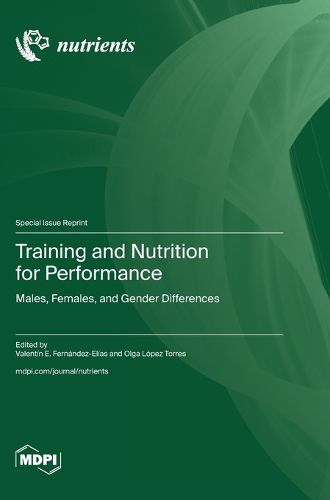Readings Newsletter
Become a Readings Member to make your shopping experience even easier.
Sign in or sign up for free!
You’re not far away from qualifying for FREE standard shipping within Australia
You’ve qualified for FREE standard shipping within Australia
The cart is loading…






This title is printed to order. This book may have been self-published. If so, we cannot guarantee the quality of the content. In the main most books will have gone through the editing process however some may not. We therefore suggest that you be aware of this before ordering this book. If in doubt check either the author or publisher’s details as we are unable to accept any returns unless they are faulty. Please contact us if you have any questions.
The number of participants in sports, whether amateur and professional, or in highly demanding exercise modalities, such as high-intensity functional training or ultra-endurance racing, has increased in recent decades. Both males and females have become increasingly engaging in fitness exercise programs to improve their health and wellness, continually pushing themslves to reach their limits. Therefore, specific knowledge about nutrition and training strategies, including training programs, training methods, and the optimal concurrent nutrition interventions to enhance performance, health, and wellbeing in males and females, must be developed extensively. Further, females and gender differences have been investigated to a lesser extent, meaning that it is common in practice to apply similar strategies for both sexes. Due to the physiological, anatomical, and biological differences between males and females, it becomes essential to independently study males and females in order to establish specific approaches. Along these lines, there is an increasing demand to adapt combined training programs with nutritional control, the ingestion of nutritional supplements, and/or use of ergogenic aids to address the peculiarities of females and males (e.g., hormones regulation, nutritional demands, ...) in order to help competition and fitness, enhance adaptations, and thus optimize improvements in performance, wellness, and health.
$9.00 standard shipping within Australia
FREE standard shipping within Australia for orders over $100.00
Express & International shipping calculated at checkout
This title is printed to order. This book may have been self-published. If so, we cannot guarantee the quality of the content. In the main most books will have gone through the editing process however some may not. We therefore suggest that you be aware of this before ordering this book. If in doubt check either the author or publisher’s details as we are unable to accept any returns unless they are faulty. Please contact us if you have any questions.
The number of participants in sports, whether amateur and professional, or in highly demanding exercise modalities, such as high-intensity functional training or ultra-endurance racing, has increased in recent decades. Both males and females have become increasingly engaging in fitness exercise programs to improve their health and wellness, continually pushing themslves to reach their limits. Therefore, specific knowledge about nutrition and training strategies, including training programs, training methods, and the optimal concurrent nutrition interventions to enhance performance, health, and wellbeing in males and females, must be developed extensively. Further, females and gender differences have been investigated to a lesser extent, meaning that it is common in practice to apply similar strategies for both sexes. Due to the physiological, anatomical, and biological differences between males and females, it becomes essential to independently study males and females in order to establish specific approaches. Along these lines, there is an increasing demand to adapt combined training programs with nutritional control, the ingestion of nutritional supplements, and/or use of ergogenic aids to address the peculiarities of females and males (e.g., hormones regulation, nutritional demands, ...) in order to help competition and fitness, enhance adaptations, and thus optimize improvements in performance, wellness, and health.